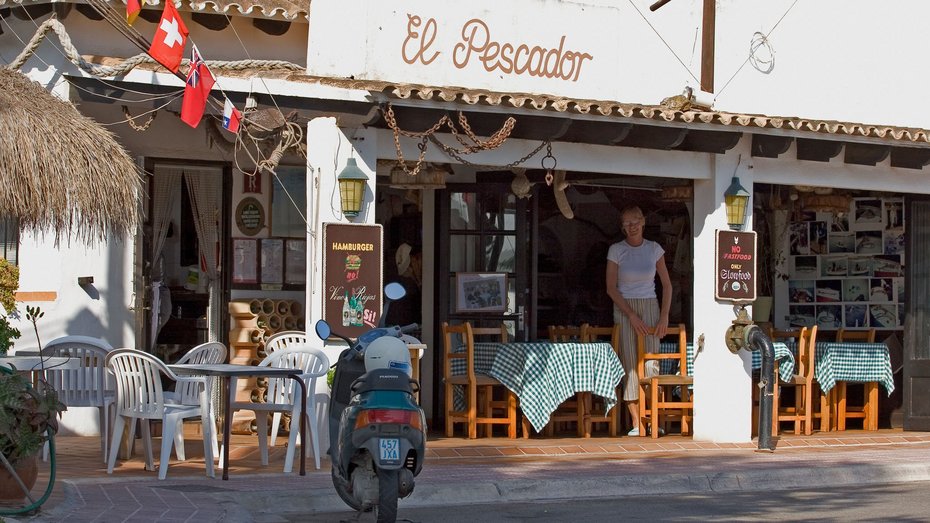
Types of commercial properties in Mallorca
Real estates come not only in a wide range of sizes, but also in a variety of forms. The characteristics of a property can be further defined, for example, by its use. In this respect, a distinction can essentially be made between residential and commercial properties. The differences between these two property types relate, among other things, to the technical building equipment and the floor plan typologies.
What are commercial properties anyway?
In contrast to residential properties, which are primarily used for living, commercial properties are primarily used for commercial or freelance purposes. They are often significantly more dependent on economic conditions than residential properties. Both supply and demand determine the price. Larger fluctuations are the rule rather than the exception here, and this factor naturally also impacts the profitability of this type of property. For this reason, commercial properties appear to be very interesting for real estate companies, such as open-ended or closed-end real estate funds.
The property's yield is often used for valuation. Typical value drivers include the location, the condition of the property, and its structural qualities. Of course, commercial properties also come in a variety of forms, as the term "commercial" is used in a wide variety of ways. Ultimately, not every business cooperates with every floor plan type or every technical building equipment. Typical types include office properties, spaces that can be assigned to retail, production properties and workshops, and logistics properties. But hotel and restaurant properties can also be classified as commercial real estate.

Commercial properties assigned to office use
Office properties are among the types of commercial real estate that can be used relatively flexibly. They make up a large portion of commercial real estate. They are used by, among others, banks, insurance companies, companies with a focus on administration and management, engineering firms, IT companies, call centers, consulting firms, agencies and publishers, as well as law firms. It is not uncommon for several units to be housed within an office building. A typical office space usually includes a reception area, various individual and group offices, restrooms, and, if necessary, a kitchenette and a room for IT infrastructure. Since an office unit usually houses several computers, monitors, printers, and other electrical devices, the issue of cooling load is often of great importance.
The characteristics of an office property include, in addition to costs, space, and layout, the type of air conditioning, internet connection, and various additional services. Not only the property itself but also the location has a significant influence on the monthly rent.
Commercial real estate for retail
Retail properties typically offer large, contiguous spaces and convenient access, meaning easy access. Shop windows and large glass facades can significantly contribute to the property's attractiveness, which can have a positive impact on sales. Furthermore, you should carefully analyze whether the location fits the store's concept. Typical retail spaces include department stores, supermarkets, and shopping centers. Kiosks can also be classified as such. Retail spaces are often designed much less flexibly than office space, for example. This aspect therefore often compromises the potential for alternative uses. Poor alternative uses mean that the property was clearly designed to meet the individual requirements of a user, and the subsequent occupant has limited use of the property. For tenants, this may mean they may have to search a little longer to find a suitable property.
The retail property market is generally considered particularly dynamic. Fluctuating rents or purchase prices can be the result of this dynamic. In many cases, location has an even greater impact on rents for retail properties than for office properties.

Hotel and catering properties
Hotel and restaurant properties are of great importance on Mallorca, an island largely dominated by tourism. Both hotel and restaurant properties are considered to be extremely specific in terms of floor plan typology and amenities. This means that the effort required to convert a hotel or restaurant property into an office, production, or logistics property is often very significant. Here, too, the location can be a decisive factor for business success. It should fit the hotel or restaurant concept. Busy shopping streets or areas characterized by popular tourist attractions can be particularly advantageous for restaurant properties. In principle, the premises of a hotel or restaurant property can be divided into staff areas and areas intended for guests and visitors. Staff areas include, for example, kitchens, storage rooms, and laundry rooms. In a hotel or restaurant property, the proportion of staff areas in the total space should not be underestimated.
Production Properties and Workshops
The manufacturing industry also requires specialized space to carry out its work efficiently and safely. As the use of production properties becomes increasingly specific, the potential for alternative uses continues to decline. Production properties are generally located in specially designated areas or in commercial or industrial parks. In larger cities, these areas or parks often even have a specific industry focus. Workshops and laboratories offer similar characteristics to production properties. Good transport links are one of the most important criteria for such a commercial property.
Logistics real estate
The topic of logistics real estate has gained significant importance in recent years. Logistics properties are typically large-scale facilities in which a wide variety of goods are stored, distributed, or picked. The equipment and dimensions of the property determine which goods can be stored. For example, a logistics property can be designed as a cold storage facility. Logistics properties are often located near manufacturing facilities and business parks in industrial areas. Transport links are also an important location criterion for logistics properties.







